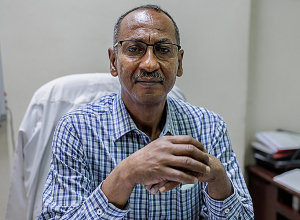US assists goat breeding and goat cheese production in Armenia

On November 5, U.S. Ambassador to Armenia Richard Mills, Jr., accompanied by Armenian Deputy Minister of Agriculture Armen Harutyunyan, visited a number of agricultural operations in Vayots Dzor that are thriving with U.S. support. This visit was organized within the framework of the month-long focus on agriculture and rural development launched by the Embassy last week. The trip included a visit to the ARID Goat Breeding Center in Yeghegnadzor, established in 1999 by the U.S. Department of Agriculture (USDA) Marketing Assistance Project. The breeding center helps develop an independent and economically viable means of raising dairy goats in Armenia by using genetic science to improve Armenia’s goat population, and by providing technical assistance, genetic testing, and veterinary consulting. The Center has recently started exploring agritourism possibilities as well through the USDA-supported “Agritourism Development” project. Promoting local goat cheese and other products to tourists will help local farmers generate additional income. “It is exciting to see this operation. Not only is it a successful scientific effort, using genetics to improve the quality of goats in Armenia, but it also represents the enormous potential there is in connecting Armenia’s agricultural products and know-how, honed over centuries, to enhance its tourism prospects today,” said Ambassador Mills. The Ambassador and Deputy Minister also met with local dairy cooperative members at a milk collection operation in Aghnjadzor. The facility is funded through USAID’s Advanced Rural Development Initiative (ARDI), a 5-year, $4 million program launched in September 2013. ARDI aims to increase rural employment and increase incomes for Armenians. “Talking with these farmers, I know they would like to sell more milk on a consistent basis,” Ambassador Mills said. “And thanks to the co-operative supported by USAID, they now have better access to the tools and resources they need to ensure long-term, year-round employment and income.” The last stop in the dairy cycle was a visit to the Selim goat cheese production facility in the village of Salli. Thanks to assistance from the USDA-funded Center for Agribusiness and Rural Development (CARD), this facility was opened in 2002, using local goat milk to produce feta cheese for local consumption and export. CARD has provided ongoing support since then, through technical training, product development, and financial assistance to ease problems stemming from international currency fluctuations. “It makes me proud to see how the assistance we’ve provided at various stages of the dairy production chain has really paid off, resulting in very impressive and professional operations,” Ambassador Mills said. “By giving Armenian farmers and food producers modest support, they can compete in the regional export market. This helps to boost incomes not just here, but throughout Armenia.” The Ambassador and Deputy Minister ended their visit to the region by meeting with the mayors and community members of Rind, Chiva, and Yalpin villages, which benefit from USAID-funded improvement projects. These farmers raise fruit, normally sold at roadside stands or in local markets. To expand their operations, USAID is funding irrigation projects and cold-storage to allow them to sell more fruit at a national level. We anticipate this project will also create long-term employment for 420 people.



